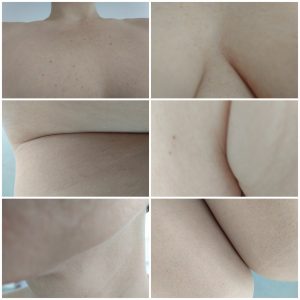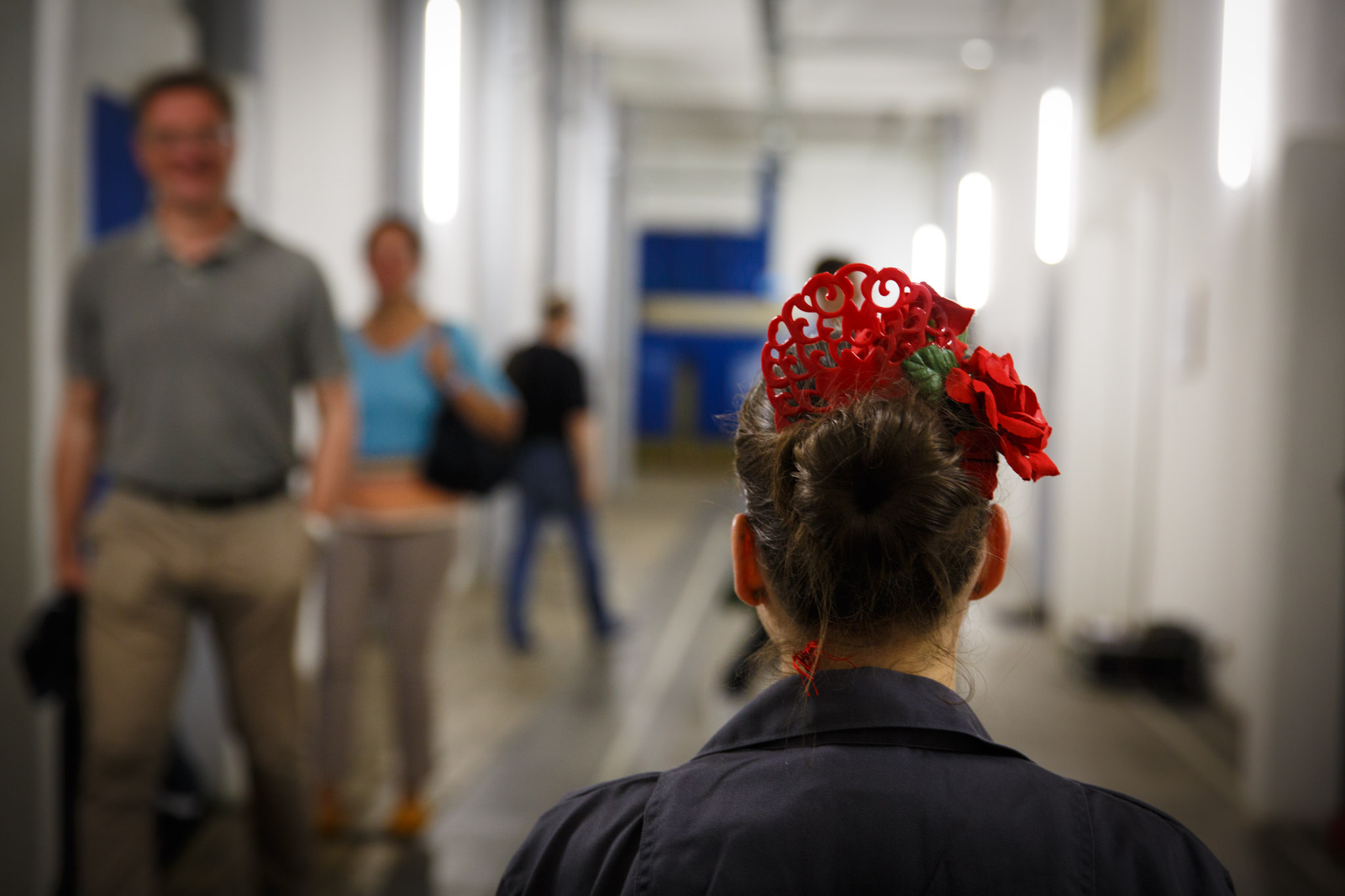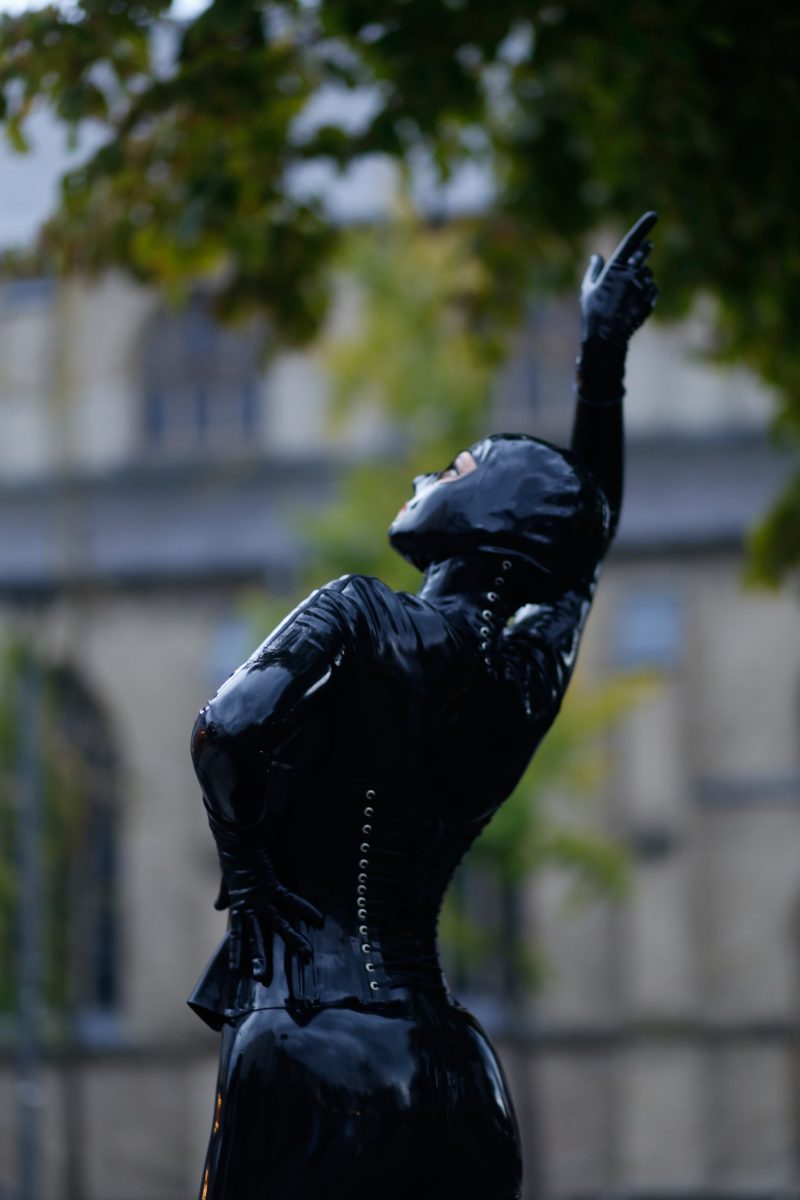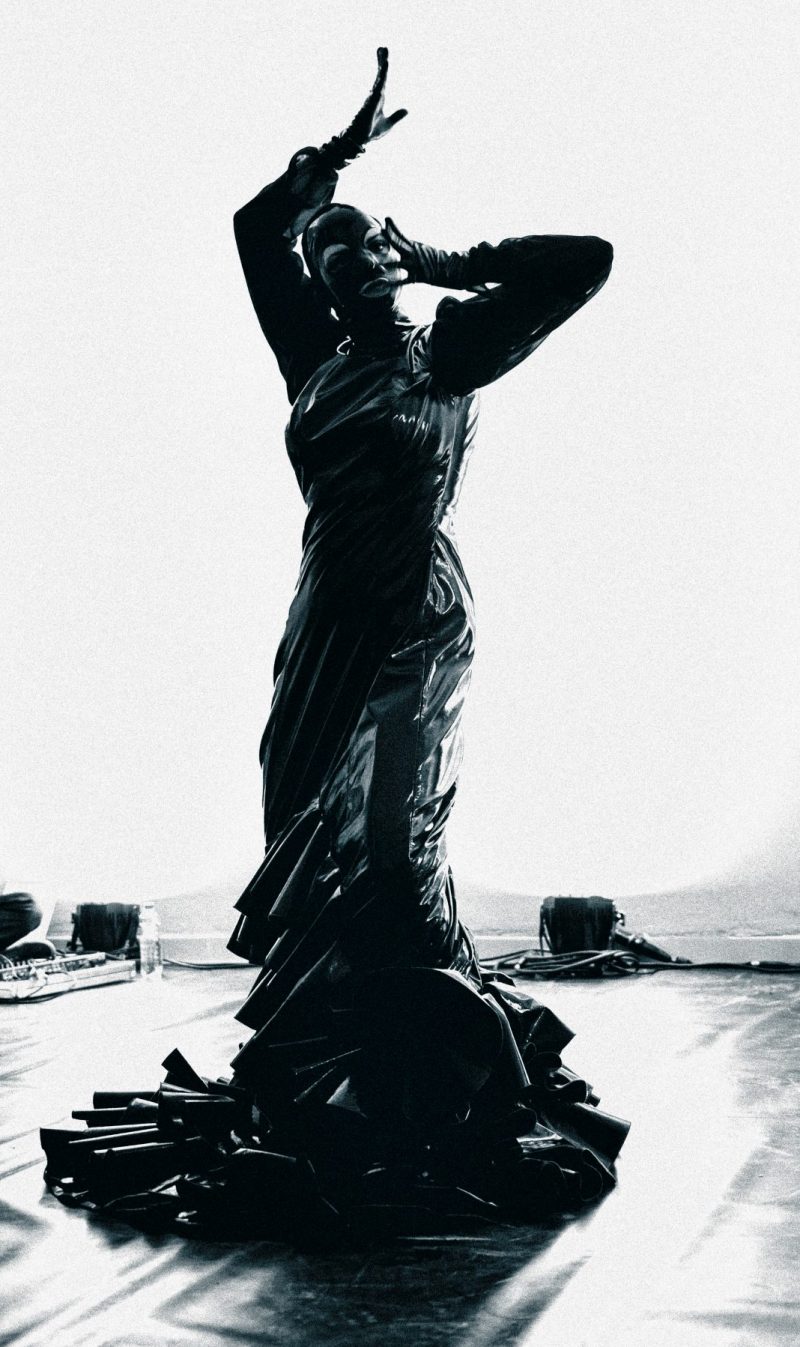
Dem Tanz auf der Spur
„Dancing to me is not something sentimental. Dancing to me is movement – people moving in time and in space. It has nothing to do with sentimentality or love but with activity.”
(Merce Cunningham in Huschka 2000, 206)
See below for the English version.
Leib – Raum
Ich stütze mein Menschenbild auf die erkenntnistheoretische Denkweise der Philosophie. Während des Studiums habe ich begonnen, mich mit dem phänomenologischen Entwurf des heilpädagogischen Menschenbildes zu beschäftigen, welches angelehnt ist an die Erkenntnisse Edmund Husserls.
Auf der Basis des Lebensweltentwurfs Husserls entwirft der Franzose Marcel Merleau-Ponty seine Theorie des Leibes. In ihr erscheint der Leib als ursprüngliche „Beziehung von Mensch und Welt, (…) der als vorpersonales Subjekt aufzufassen ist“ (Schörken 1997, 3)
Aus der Sicht Merleau-Pontys kann Welt nicht beziehungslos vom Dasein des Menschen erkannt werden. Über den Körper des Menschen, der mehr als nur eine stoffliche Hülle ist, steht der Mensch mit der Welt in Kontakt. Der Körper ist die wahrnehmbare Form der Existenz des Menschen und gleichzeitig das Werkzeug, mit dem er Welt wahrnehmen kann. Es gibt keinen Körper getrennt vom Leib und keinen Leib ohne Körper. Der Körper ist in seiner stofflichen Beschaffenheit die „Räumlichkeit des Leibes“ (Pfeffer 1988, 25), das „zentrale Erlebnisobjekt, das anschauliche Ich“ (Schmidt 2002, 423)
Sobald der Mensch „ist“ – sprich existiert – steht er bereits in Beziehung zur Welt.
Merleau-Ponty bezeichnet diese Beziehung als „Sein – zur – Welt“ (Merleau-Ponty nach Danner 1994, 137).
In der Leiblichkeit verbinden sich Körper und Geist. Aus ihr heraus manifestiert sich der Körper in seiner individuellen Beschaffenheit und führt über den Prozess der Wahrnehmung Informationen an die verarbeitende Instanz, den Geist, weiter. In diesem Prozess entwickelt sich individuelle Identität.
„Nicht mein Sein wird durch das Denken begründet, sondern umgekehrt: Die Weise meiner Existenz bestimmt mein Denken. Leiblich – sinnlich – geschichtlich bin ich zur Welt; und nur als solcher kann ich erkennen; nur in diesem Sinne kann von „Bewusstsein“ gesprochen werden.“
(Danner 1994, 137)
Identität ist als „Gestalt(ung)“ der jeweiligen Körper – Geist – Einheit bzw. des Leibes die individuelle Maßgabe der Empfindung des Sinnes der Welt (vgl. Fornefeld 2002, 160).
Leib – Zeit
Der phänomenologische Lebensweltentwurf setzt Geschichte als den Menschen konstituierend voraus. Mit der Entstehung seines Lebens tritt er in die Lebenswelt ein und vereint in seinem Bewusstsein die drei Zeiten Vergangenheit, Gegenwart und Zukunft, innerhalb derer er Teil hat am Leben. Bewusstsein im husserlschen Sinne ist Zeitlichkeit.
„Das Bewußtsein ist ein Strom von Erlebnissen, also eine fließende Mannigfaltigkeit. Aber die vielen verschiedenartigen Erlebnisse sind mir alle als „meine Erlebnisse“ bewusst. In dieser Zugehörigkeit zu „mir“ gehören sie alle zusammen, bilden sie eine Einheit. Diese synthetische Einheit der Mannigfaltigkeit des Erlebnisstroms ist nach Husserl die Zeitlichkeit.“
(Held in Husserl 2002, 24)
Die lebensweltliche Handlungszone des Menschen ist die Gegenwart. Sie ist ihm zeitlich gesehen die nächste.
Die menschliche Existenz ist durchdrungen von Zeit und Zeitstrukturen. Beginnend bei der Zeitlichkeit als menschliche Qualität bis hin zu einem wissenschaftlichen Zeit- und Geschichtsbegriff. In jedem Augenblick erlebt der Mensch Zeit. Er macht die Erfahrung subjektiver Zeitempfindung und lernt den Sinn und die Funktion der objektiven Zeitmessung kennen. Zeit ist Teil seiner Selbst und seiner Lebenswelt, und der Mensch erlebt sozusagen eine Geschichte der Zeit. Aus Zeit wird Geschichte, die in ihrem Wesen nur dann erfasst werden kann, wenn alle möglichen Lebensweisen einer Gesellschaft und der in ihr lebenden Individuen berücksichtigt werden. Der Mensch ist folglich per se ein zeitliches Wesen mit einer Lebensgeschichte, die auf eine Identität weist.
Davon ausgehend ergeben sich für mich Fragen:
Ist Tanz nicht mehr als Bewegung in Zeit und Raum?
Wann wird die Bewegung zum Tanz?
Wie wird der Körper zum Tanzkörper?
Welche Bedeutung haben dabei Training und Körperarbeit der verschiedenen Tanzformen?
Ist die Bedeutung des Körpers bei der Betrachtung von Tanz und der Entstehung des Tanzes paradox, weil der Tanzkörper zugleich Quelle und Material ist?
Was bedeuten Ästhetik und Authentizität im Tanz?
Wann wird Tanz zur Kunst?
Wie entstehen in diesem Zusammenhang Normen?
Was bedeutet das für einen Körper jenseits bestimmter Normen?
Und was bedeuten Ästhetik und Authentizität dann, jenseits der Norm?
Ist Tanz-kunst eine Handlungsweise, die es jedem Menschen ermöglicht, in und mit seiner Leiblichkeit integer zu sein, zu bleiben, zu werden?
English version:
Body – Space
I base my view of the human being on the epistemological way of thinking in philosophy. During my studies, I began to occupy myself with the phenomenological design of the curative education view of the human being, which is based on the findings of Edmund Husserl.
On the basis of Husserl’s concept of the world, the Frenchman Marcel Merleau-Ponty develops his theory of the body. In this theory, the body appears as the original ‘relationship between man and the world, (…) which is to be understood as a pre-personal subject’ (Schörken 1997, 3)
From Merleau-Ponty’s point of view, the world cannot be recognised by human existence in a way that is unrelated. Through the human body, which is more than just a material shell, humans are in contact with the world. The body is the perceptible form of human existence and at the same time the tool with which humans can perceive the world. There is no body separate from the body and no body without a body. In its material nature, the body is the ‘spatiality of the body’ (Pfeffer 1988, 25), the ‘central object of experience, the vivid self’ (Schmidt 2002, 423)
As soon as a person ‘is’ – that is, exists – they are already in relation to the world.
Merleau-Ponty describes this relationship as ‘being – in – the world’ (Merleau-Ponty, quoted in Danner 1994, 137).
In corporeality, body and mind are connected. From this, the body manifests itself in its individual nature and, through the process of perception, passes on information to the processing instance, the mind. Individual identity develops in this process.
‘It is not that my being is established by thinking, but rather the other way around: the way I exist determines my thinking. I am born into the world in a corporeal, sensual and historical way; and only as such can I recognise; only in this sense can one speak of ‘consciousness’.’
(Danner 1994, 137)
Identity, as the ‘design’ of the respective body–spirit–unity or of the body, is the individual measure of the perception of the meaning of the world (see Fornefeld 2002, 160).
Body – Time
The phenomenological concept of the life world assumes that history is constitutive of the human being. With the emergence of his life, he enters the life world and unites in his consciousness the three times past, present and future, within which he participates in life. Consciousness in Husserl’s sense is temporality.
‘Consciousness is a stream of experiences, and thus a flowing multiplicity. But I am aware of all the many different experiences as ‘my experiences’. In this belonging to ‘me’, they all belong together and form a unity. This synthetic unity of the multiplicity of the stream of experiences is, according to Husserl, temporality.’
(Held in Husserl 2002, 24)
The human being’s zone of action in the world is the present. In temporal terms, it is the closest to him.
Human existence is permeated by time and temporal structures. Beginning with temporality as a human quality and moving on to a scientific concept of time and history. The human being experiences time in every moment. He experiences subjective perception of time and becomes acquainted with the meaning and function of objective time measurement. Time is part of the self and the world in which one lives, and one experiences, so to speak, a history of time. Time becomes history, which can only be grasped in its essence if all the possible ways of life in a society and the individuals living in it are taken into account. Consequently, human beings are per se temporal beings with a life story that points to an identity.
On this basis, questions arise for me:
Is dance not more than movement in time and space?
When does movement become dance?
How does the body become a dancing body?
What is the significance of training and physical work in the various forms of dance?
Is the significance of the body in the observation of dance and the creation of dance paradoxical because the dancing body is both source and material at the same time?
What do aesthetics and authenticity mean in dance?
When does dance become art?
How do norms arise in this context?
What does this mean for a body beyond certain norms?
And what do aesthetics and authenticity mean beyond the norm?
Is dance art a way of acting that enables every human being to be, remain, and become whole in and with their corporeality?




